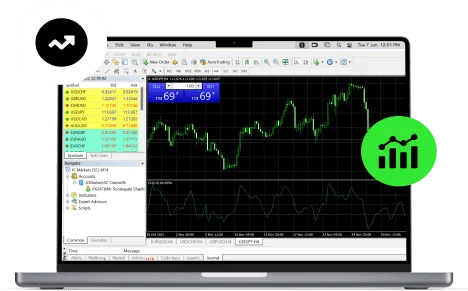Forex CFD trading involves trading one currency pair against another, predicting that one currency will rise or fall against another. In forex CFD trading, currencies are traded in pairs, like the Euro versus the US Dollar (EUR/USD).
Forex is real power

Forex CFD Spreads
How does Forex CFD Trading work?
Forex CFD trading is similar to trading CFDs on shares or futures except that when trading forex CFDs you are buying or selling one currency against another and you do not take delivery of the underlying currency. One of the key advantages Forex CFDs have over CFDs on other financial instruments is that relatively small lot sizes can be traded – lot sizes can be as small as 1000 units (one micro lot). Typically, Forex CFD trading also involves leverage which in some cases can be as high as 1:30, which is very different to trading shares where no leverage is involved.
The gross loss on your trade is calculated as follows:
Opening Price
€200,000 x 1.33623 = USD $267,246
Closing Price
€200,000 x 1.35117 = USD $270,234
Gross Loss on Trade
$-2988
Under Opening the Position:
The price of the Euro against the US Dollar (EUR/USD) is 1.33623/1.33624 and you decide to sell CFDs amounting to 2 standard lots (the equivalent of €200,000) at 1.33623.
Under Closing the Position:
One week later the Euro has risen against the US Dollar to 1.35116/1.35117 and you decide to get out of the losing trade by buying back CFDs amounting to 2 standard lots at 1.35117.
The gross profit on your trade is calculated as follows:
Opening Price
€200,000 x 1.33623 = USD $267,246
Closing Price
€200,000 x 1.32129 = USD $264,258
Gross Profit on Trade
$2988
Under Opening the Position:
The price of the Euro against the US Dollar (EUR/USD) is 1.33623/1.33624 and you decide to sell CFDs amounting to 2 standard lots (the equivalent of €200,000) at 1.33623.
Under Closing the Position:
One week later the Euro has fallen against the US Dollar to 1.32128/1.32129 and you decide to take your profit by buying back CFDs amounting to 2 standard lots at 1.32129.
Online Forex Trading
What Influences Prices in Forex Trading?
There is an endless number of factors that all contribute and influence the prices in forex trading (i.e. currency rates) daily, but it could be safe to say that there are 6 major factors which contribute the most and are more or less the main driving forces for forex trading price fluctuation:
1. Differentials in inflation
2. Differentials in interest rates
3. Current account deficits
4. Public debt
5. Terms of trade
6. Political and economic stability
In order to best comprehend the above 6 factors, you will have to keep in mind that currencies are traded against one another. So when one falls, another one rises as the price denomination of any currency is always stated against another currency.
What is Important in Forex Trading?
Forex trading market participants can fall in any of the following categories:
1. Travellers or overseas consumers who exchange money to travel overseas or purchase goods from overseas.
2. Businesses that purchase raw materials or goods from overseas and need to exchange their local currency to the currency of the country of the seller.
3. Investors or speculators who exchange currencies, which either require a foreign currency, to perform trading in equities or other asset classes from overseas or either are trading currencies with the aim of making a profit from market changes.
4. Banking institutions that exchange money to service their clients or to lend money to overseas clients.
5. Governments or central banks that either buy or sell currencies and try to adjust financial imbalances, or adjust economic conditions.
Who are Forex Trading Market Participants?
Forex trading market participants can fall in any of the following categories:
1. Travellers or overseas consumers who exchange money to travel overseas or purchase goods from overseas.
2. Businesses that purchase raw materials or goods from overseas and need to exchange their local currency to the currency of the country of the seller.
3. Investors or speculators who exchange currencies, which either require a foreign currency, to perform trading in equities or other asset classes from overseas or either are trading currencies with the aim of making a profit from market changes.
4. Banking institutions that exchange money to service their clients or to lend money to overseas clients.
5. Governments or central banks that either buy or sell currencies and try to adjust financial imbalances, or adjust economic conditions.
It's important to know
What are Majors in Forex Trading?
In forex trading, some currency pairs are nicknamed majors (major pairs). This category includes the most traded currency pairs and they always include the USD on one side.
Major pairs include: EUR/USD, USD/JPY, GBP/USD, USD/CHF, USD/CAD, AUD/USD, NZD/USD
What are Minors in Forex Trading?
In forex trading, minor currency pairs or crosses are all currency pairs that do not include the USD on one side.
What are Exotics in Forex Trading?
In forex trading, exotic pairs or exotics refers to currency pairs that include a major currency paired with the currency of a smaller or emerging economy. Exotic pairs tend to be traded less frequently, in comparison to majors. They usually have more volatility and are less liquid.
